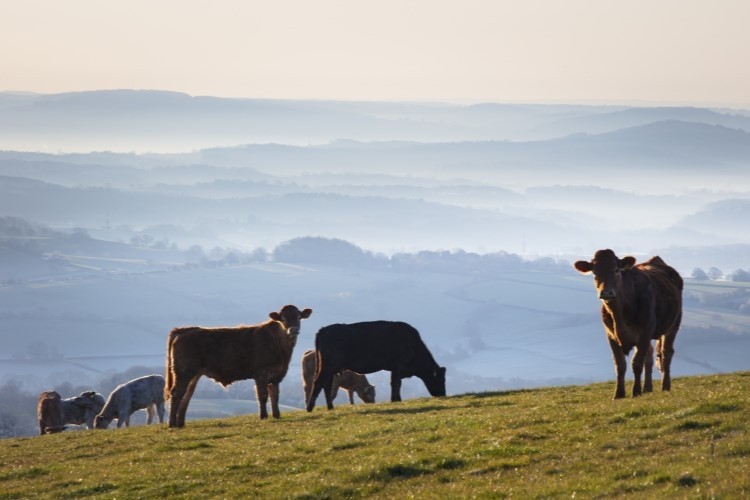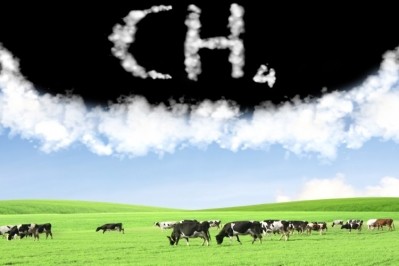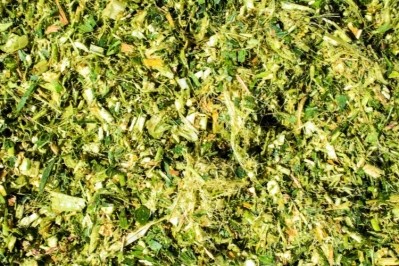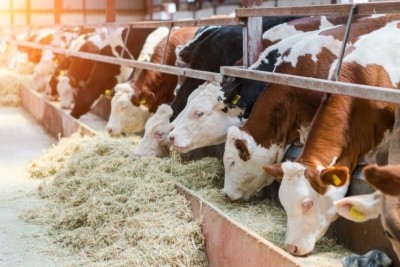‘This is a holistic approach’: Danone unveils details behind its industry-first methane reduction program

Talking during a webinar organized by Changing Markets, Danone’s global public affairs and sustainability director Jeanette Coombs-Lanot outlined the multinational’s multi-pronged approach.
As reported earlier this week, the French food group became the first food company to announce a methane-specific climate pledge, vowing to reduce methane produced by its fresh milk supply by 30% by 2030. The target is aligned to the Global Methane Pledge, and the manufacturer will report on its progress as part of its financial disclosure.
Coombs-Lanot said that the Group’s fresh milk supply contributes 70% of Danone’s overall methane emissions, with the remaining 30% coming from its ingredients supply chain.
“We have already been tackling methane – it is inherent in our agriculture program – so we have already seen how to do this,” she said. “But we didn’t get explicit or focused on methane reduction.” Seeing how important the issue had become globally however had convinced the multi-national to do more, she added.
The plans had been ‘the fruit of a lot of different discussions’ and had been in the works for around one year, Coombs-Lanot revealed.
She stressed that Danone had already set out its own science-based targets, but that reducing methane in particular would have been ‘critical’ to achieving those. “We need to be explicit and measure our methane emissions separately and report on this specifically,” she said.
“We will work across all farming models to adapt different solutions,” she explained. This would include herd and feed management, manure management, and food additives such as Royal DSM’s Bovaer. “This is a holistic approach,” she said, adding that ‘it is important to get the fundamentals right’.
Speaking on Danone’s partnership with the Environmental Defense Fund (EDF), Coombs-Lanot added that the body will work with Danone on the ‘reporting aspect’ of its program, as well as on ‘getting the economic models in place’ to ensure farmers are not disadvantaged.
The multi-national is also looking at a ‘collaboration model’ where the solutions it will deploy during its methane-reduction program will be ‘tested and understood at a deeper level, including with the public sector’.
Coombs-Lanot also highlighted that Danone is evaluating policy ‘really carefully’ and urged fellow ag companies and governments to collaborate, concluding: “There’s a really important precedent that this sets, in getting the industry to shift in this direction. It’s about [achieving] that level-playing field.”
From ‘unproven techno-fixes’ to ‘undue financial hardships’
While the news of Danone’s methane reduction commitment has been seen in broadly positive light, the fact that the Group plans to significantly rely on feed additives as part of its strategy has raised eyebrows in some circles.
A spokesperson for the Institute for Agriculture & Trade Policy (IATP), which exposed the French food giant as one of the largest methane emitters in a report last November, said that methane inhibitors are ‘a prime example of unproven techno-fixes’. “There is a lot of talk about the potential of methane inhibitors added to feed to cut methane. However, the science is not robust enough and the long-term impacts on methane reduction are far from clear. In short, the jury is still out. Unfortunately, this seems to be a key pathway for many of the dairy and meat companies we’ve analysed, and we’re interested to know how much Danone will depend on this technology for its target.”
The body has also raised urged the dairy giant to ‘invest generously in the farmers that supply them’. “This is the only way, in the absence of good agriculture policy and financial support, that farmers can make the necessary on-farm changes to stop polluting nitrates, methane and nitrous oxide without undue financial hardships,” the spokesperson said.
“Danone has to pay farmers their cost of production plus a reasonable profit, as there will be on-farm costs associated with the transition to agroecological practices.”
The body predicts however that the transition will lower costs for farmers in the long run. “Raising fewer animals at better prices and lower costs could improve profitability for farmers,” the IATP spokesperson said. “We need to have a different vision of how food can be produced that meets the existential environmental challenges we face today.”
Standard baselines and targets
The IATP has called Danone ‘a first mover’ in adhering to common benchmarks through its latest commitment – but added that ‘all companies need to get in line with global targets’.
“That said, the Global Methane Pledge signed by governments doesn’t go nearly far enough,” the spokesperson continued. “To meet 1.5C goals, methane should be cut 45% by the end of this decade, according to the United Nations Environment Programme. Our report shows that the polluting power of methane is far higher when we look at shorter timeframes, and a short time frame is all we have to give humanity a chance to limit climate chaos.
“But…we absolutely believe common benchmarks are essential to measure progress. However, governments have to step in to demand consistent and comprehensive reporting requirements that allow all players and stakeholders to trust what is being analysed. These rules should also establish common baselines to measure progress.”








